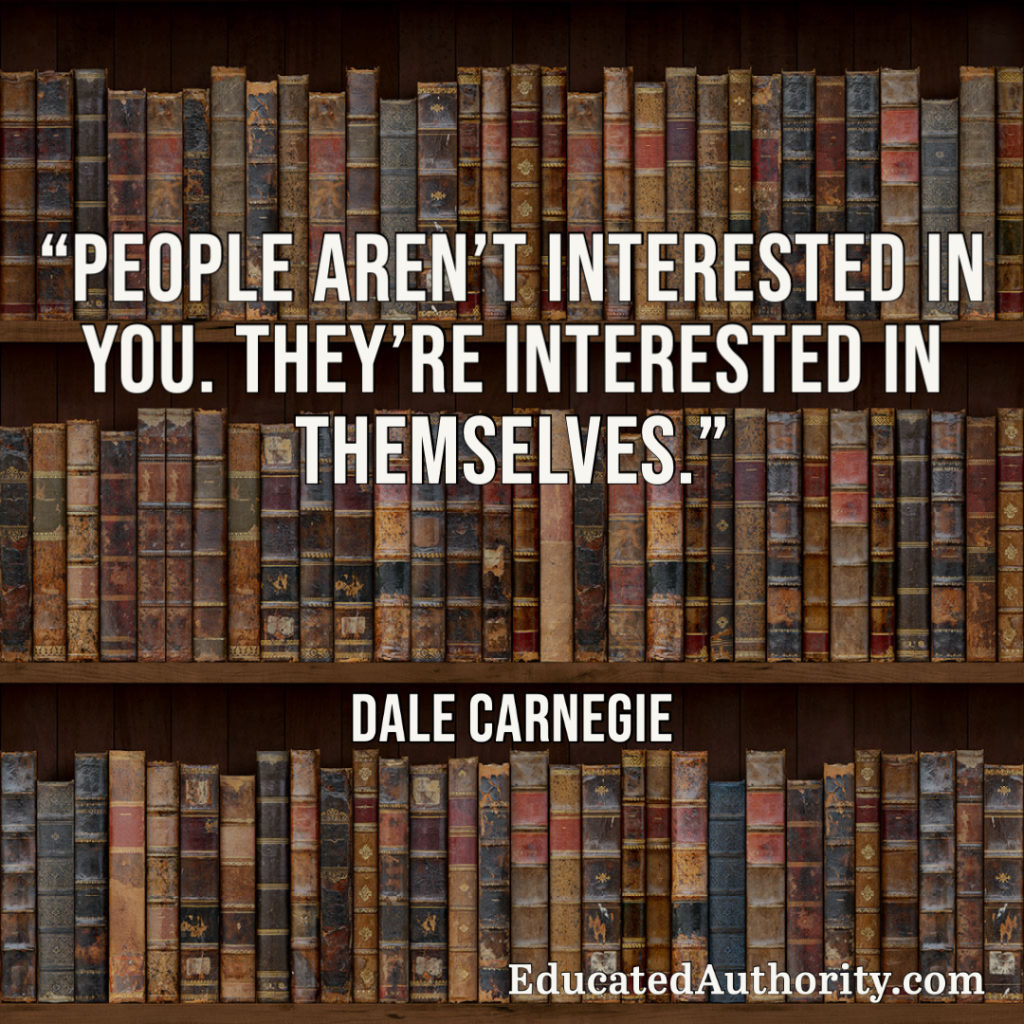“People aren’t interested in you. They’re interested in themselves.”
— Dale Carnegie
As a thought leader, you’ve probably already been told that you need to tell your story to connect with your audience. There’s certainly no shortage of “marketing experts” to show up and tell you that your story sells.
That is both true and misleading. And it’s time to make a critical distinction or two that will make all the difference. Most people that try to tell their story aren’t getting this right, so you will have an immediate advantage if you do.
Dale Carnegie was right: people don’t care about you; they only care about themselves. It’s always been that way, and if anything it’s getting more and more true.
So no, people don’t want to hear your story. They want to hear their story with you playing the lead role.
Get it?
People only care about your story to the extent that it can help them achieve the transformation they want to achieve.
The job of your story is not for them to know you better — why would they want to do that? — but to see themselves in your situation and visualize themselves achieving your success.
There’s a fine art to crafting a story that can do that. I help my clients build their origin story, mission story, and their victory over hardship story in order to connect with their crowd and teach the key values necessary for that crowd to achieve the transformation they desire and to become good clients and customers.
Does your story do that?
